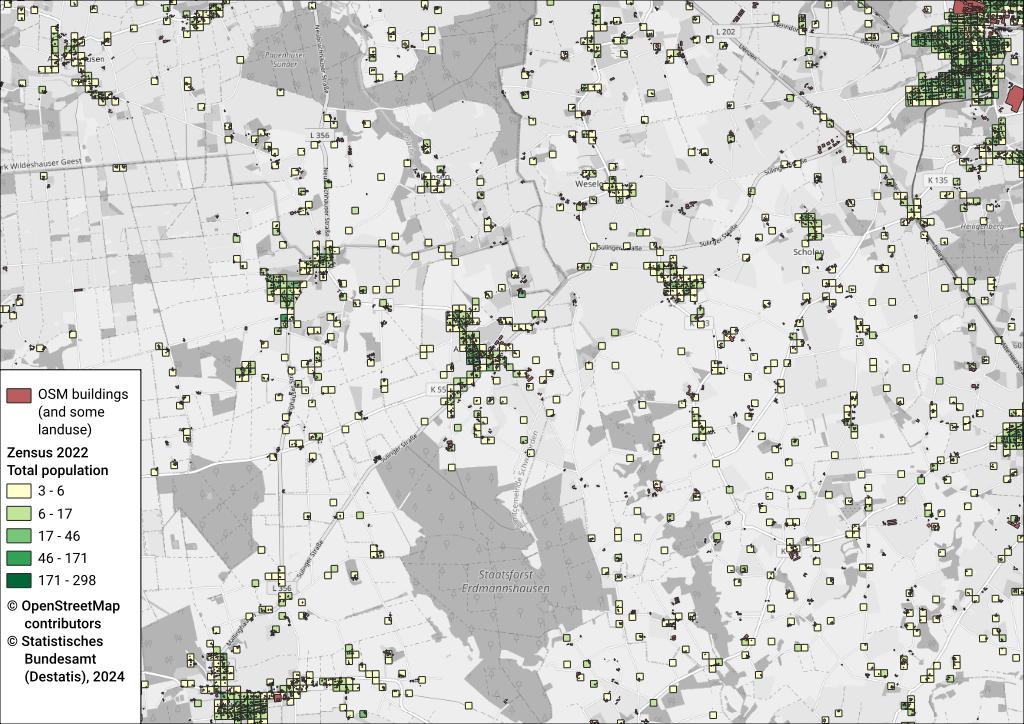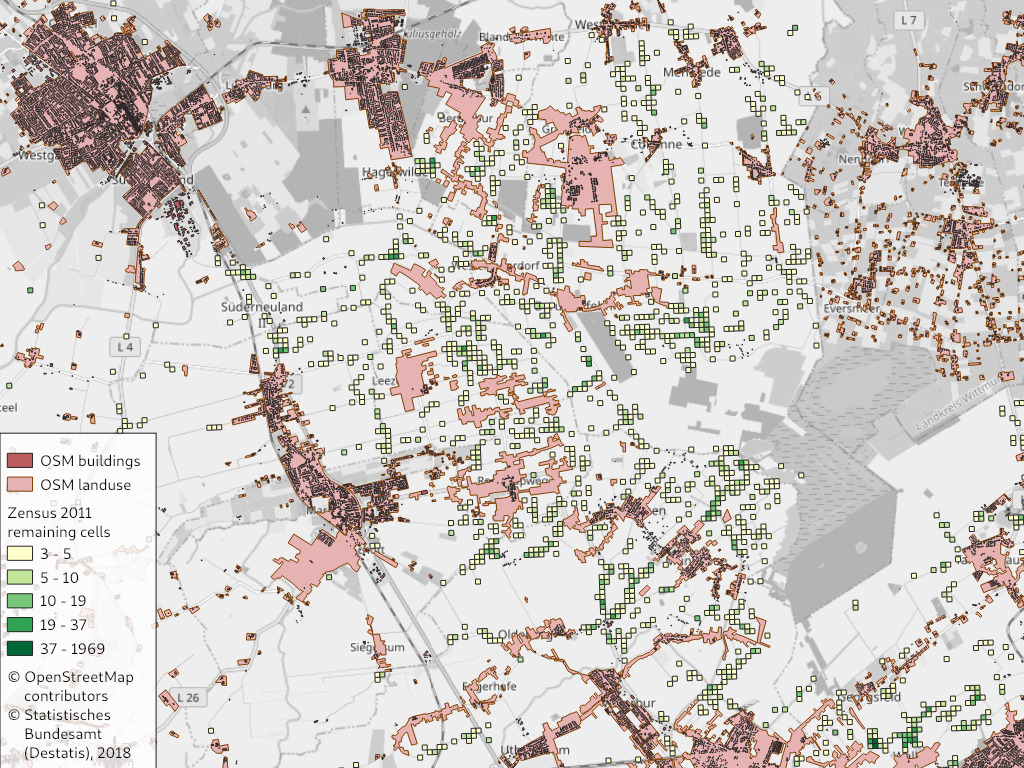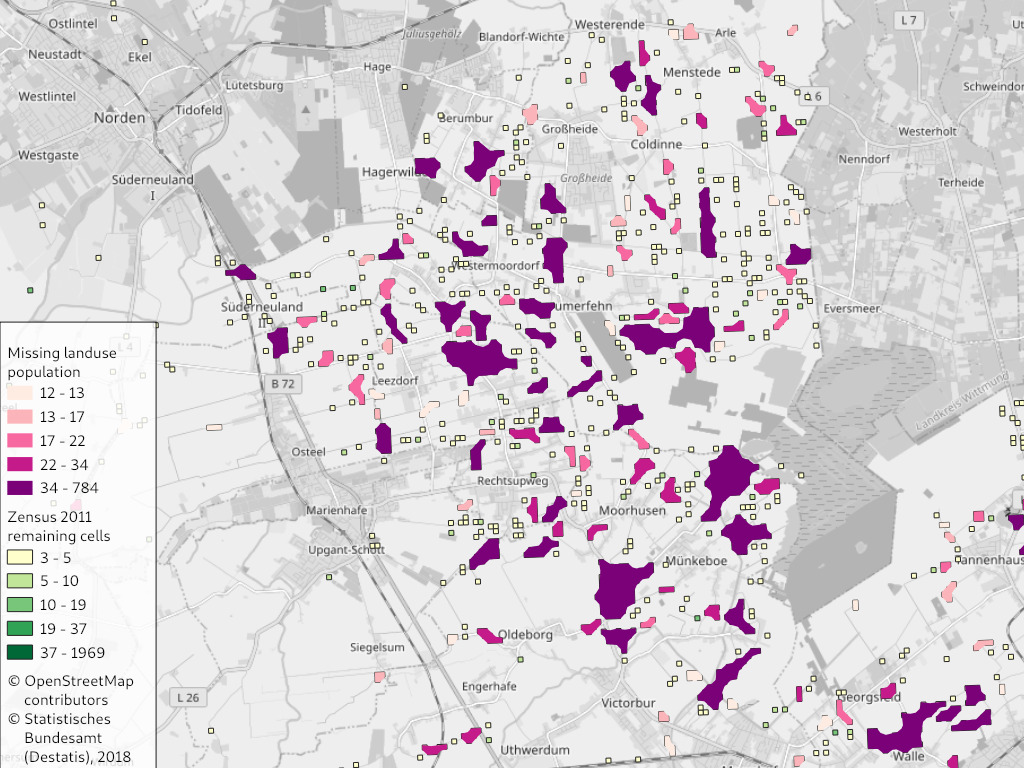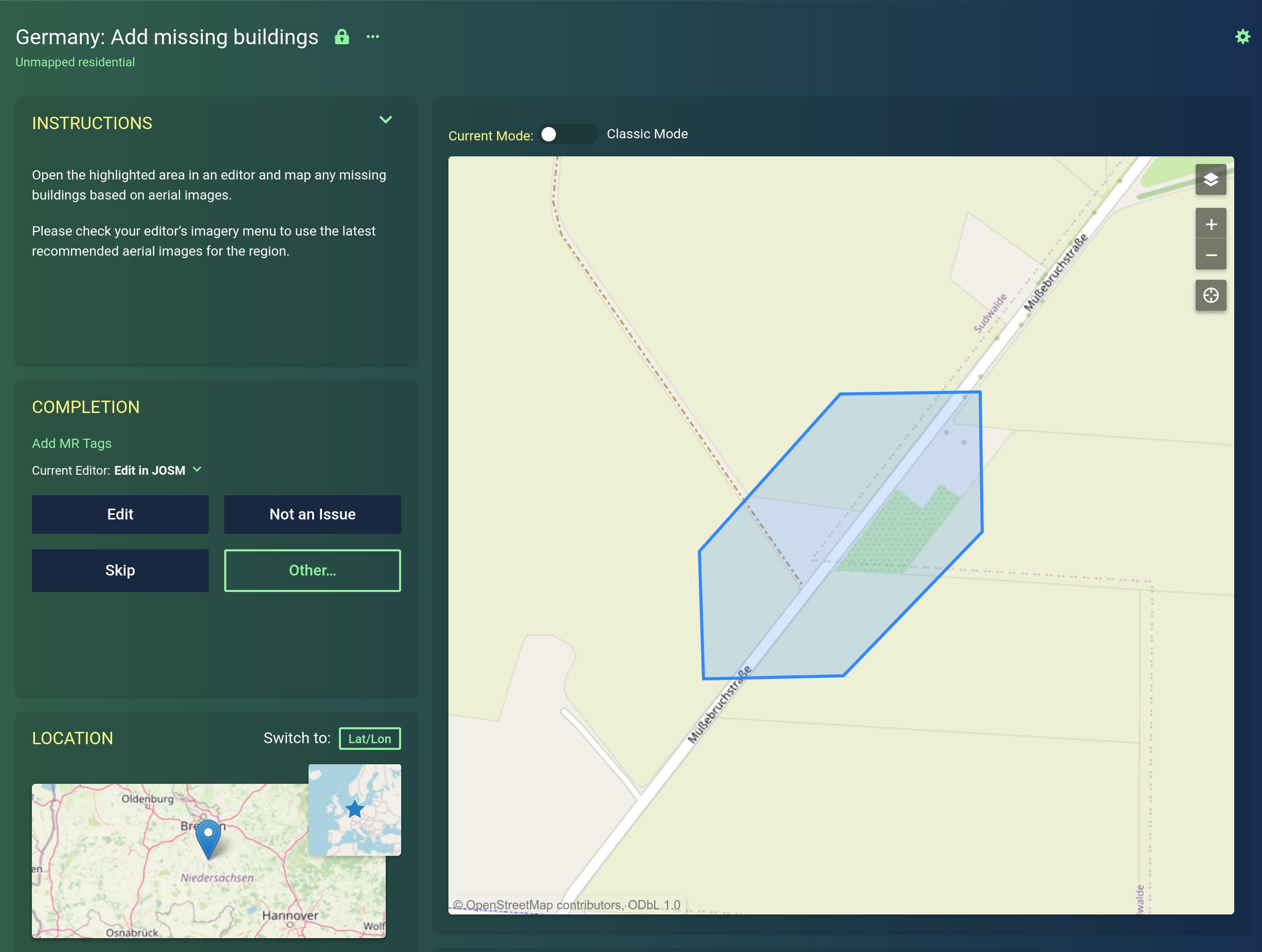Population data for Germany is available on a high-resolution 100 m grid from the census 2011. By comparing this data to residential landuse areas and buildings, one can find areas in Germany that are not yet mapped in OpenStreetMap. These are mostly small villages and settlements.
The identified unmapped areas are fed as mapping tasks into Maproulette, a micro-tasking platform for OpenStreetMap contributors, where they can improve the map one small issue at a time.
Check out the follow-up projects:
- German Census 2011: Population on a 100 m grid (“Demographie im 100 Meter-Gitter im CSV-Format”). Keep in mind that the data is from 2011 and things have changed since then. E.g. new houses built since then are not taken into account. But if some place was inhabited in 2011 it is very likely that it is still inhabited today.
- OpenStreetMap dump for Germany from Geofabrik
01_download.sh – Download data
Download the input data.
02_createdb.sh – Create database
Create the PostGIS database where the data analysis will happen.
03_import_census.sh – Import census data
Filter the census data for grid cells with population > 0. Then import the data into the PostGIS database.
The data looks like this:
04_import_osm.sh – Import OSM data
Filter the OpenStreetMap data for residential and other relevant landuses and buildings. OpenStreetMap contains all kinds of geospatial data, e.g. roads, shops and schools. We are only interested in areas where people live like residential areas or buildings. Some other types of places need to be included like farms, allotments, nursery homes, hospitals or prisons, where people may reside permanently.
On this map you can see how these areas overlap with the census cells. We are interested in the cells which are not yet covered by residential areas.
05_analyze.sh – Intersect the data sets
Now we filter the census cells to include only those that are not covered or touched in any way by the relevant OSM objects. These identify areas that should be looked at for sure.
Finally identify clusters of touching squares and merge them into single polygons to identify each connected area that should become one task.
The polygons are filtered once more to include only those which are larger than one cell and contain at least 12 people. This is done to avoid false positives and to work on the most urgent cases first.
This map shows how the final output looks like:
Each one of the polygons is then presented as mapping task to the Maproulette contributors. The outline indicates the rough area to check, but users will then use satellite/aerial imagery to get the precise outline.
You can run the analysis yourself, e.g. for newer data or if you want to modify the criteria.
The processing requires about 100 GB of temporary disk space and 1 hour of computation time.
This is the easier way if you already have Docker and don’t want to bother with the dependencies.
docker-compose up
The output file is data/unmapped_census_fixed.geojson.
Install PostgreSQL, PostGIS, osm2pgsql, osmconvert and osmfilter (package
osmctools) and npm.
Install geojson-rewind
using npm install -g @mapbox/geojson-rewind.
Edit env.sh to set the PostgreSQL credentials.
Run ./run.sh to execute all processing steps, or call the single scripts to
run specific steps.
The source code of this project is licensed under the terms of the MIT license.
The census data may be used for derivative works, if you mention the source “Statistisches Bundesamt (www.destatis.de)”. See their imprint for details.
As the output data is a Derivative Work of OpenStreetMap data, is has to be licensed under ODbL. Please refer to the OSM Copyright page and the information linked there.




